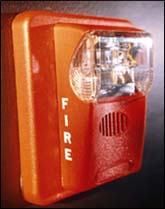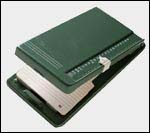 What
is an Emergency Action Plan? What
is an Emergency Action Plan?
An emergency action plan (EAP) is a written document
required by particular OSHA standards [29 CFR 1910.38(a)]. The purpose of an EAP is to facilitate
and organize employer and employee actions during
workplace emergencies. Well developed emergency
plans and proper employee training (such that
employees understand their roles and
responsibilities within the plan) will result in
fewer and less severe employee injuries and less
structural damage to the facility during
emergencies. A poorly prepared plan, likely will
lead to a disorganized evacuation or emergency
response, resulting in confusion, injury, and
property damage.
Putting
together a comprehensive emergency action plan that deals
with those issues specific to your worksite is not difficult.
It involves taking what was learned from your workplace
evaluation and describing how employees will respond
to different types of emergencies, taking into account
your specific worksite layout, structural features, and
emergency systems. Most organizations find it beneficial
to include a diverse group of representatives (management
and employees) in this planning process and to meet frequently
to review progress and allocate development tasks. The
commitment and support of all employees is critical to
the plan's success in the event of an emergency; ask for
their help in establishing and implementing your emergency
action plan. For smaller organizations, the plan does not need to be written and may be
communicated orally if there are 10 or fewer employees [29 CFR 1910.38(b)].
At
a minimum, the plan must include but is not limited to
the following elements [29 CFR 1910.38(c)]:
Although
they are not specifically required
by OSHA, you may find it helpful
to include the following in your
plan:
- A
description of the
alarm system to be used
to notify employees
(including disabled
employees) to evacuate
and/or take other actions.
The alarms used for
different actions should be
distinctive and might
include horn blasts, sirens,
or even public address
systems. [More
on Alarms]
- The site of an alternative
communications center to be
used in the event of a fire
or explosion; and
- A secure on- or offsite
location to store originals
or duplicate copies of accounting
records, legal documents,
your employees' emergency
contact lists, and other essential
records.
Now that you have
read through the basic overview of an emergency
action plan, find out
how to implement your plan. |
|
Means of
reporting fires and other emergencies |
 Procedures the fire and emergency reporting
procedures. Preferred procedures for reporting
emergencies such as dialing 911,
or an internal emergency number,
or pulling a manual fire alarm are
examples of emergency reporting
procedures, but there are many
other possibilities [29 CFR 1910.38(c)(1)]. Procedures the fire and emergency reporting
procedures. Preferred procedures for reporting
emergencies such as dialing 911,
or an internal emergency number,
or pulling a manual fire alarm are
examples of emergency reporting
procedures, but there are many
other possibilities [29 CFR 1910.38(c)(1)].
For additional information, see
reporting an emergency and
alerting employees.
|
|
Evacuation
procedures and emergency escape route
assignments |
 An
evacuation policy, procedures, and
escape route assignments so
employees understand who is
authorized to order an evacuation,
under what conditions an
evacuation would be necessary, how
to evacuate, and what routes to
take. Exit diagrams are typically
used to identify the escape routes
to be followed by employees from
each specific facility location
[29 CFR 1910.38(c)(2)]. An
evacuation policy, procedures, and
escape route assignments so
employees understand who is
authorized to order an evacuation,
under what conditions an
evacuation would be necessary, how
to evacuate, and what routes to
take. Exit diagrams are typically
used to identify the escape routes
to be followed by employees from
each specific facility location
[29 CFR 1910.38(c)(2)].
Evacuation procedures
also often describe actions employees
should take before and while
evacuating such as shutting
windows, turning off equipment,
and closing doors behind them.
Sometimes a critical decision may
need to be made when planning -
whether or not employees should
fight a small fire with a portable
fire extinguisher or simply
evacuate. Portable fire
extinguishers may be integrated
into the emergency action plan,
find out how!
For additional information, see
evacuation elements.
|
Procedures to
be followed by employees who remain to
operate
critical plant operations before they
evacuate |
 Employees may be required to
operate fire extinguishers or shut
down gas and/or electrical systems
and other special equipment that
could be damaged if left operating
or create additional hazards to
emergency responders (such as
releasing hazardous materials)
[29 CFR 1910.38(c)(3)]. Employees may be required to
operate fire extinguishers or shut
down gas and/or electrical systems
and other special equipment that
could be damaged if left operating
or create additional hazards to
emergency responders (such as
releasing hazardous materials)
[29 CFR 1910.38(c)(3)].For additional
information, see
evacuation procedures
- employees who remain.
|
Procedures to
account for all employees after an
emergency evacuation has been completed |
|
Procedures to account
for employees after the
evacuation to ensure that
everyone got out. This might
include procedures for designated
employees to sweep areas,
checking offices and rest
rooms, before being the last
to leave a workplace or conducting
a roll call in the assembly
area. Many employers designate
an "evacuation warden"
to assist others in an evacuation
and to account for personnel
[29 CFR 1910.38(c)(4)].
For additional Information, see
evacuation procedures - account
for employees.
|
Names or job
titles of persons who can be contacted
for
further information or explanation of
duties under the plan |
 The
names, titles, departments, and
phone numbers of employees who can
be contacted for additional
information or clarification of
some aspect of the plan [29 CFR 1910.38(c)(6)]. The
names, titles, departments, and
phone numbers of employees who can
be contacted for additional
information or clarification of
some aspect of the plan [29 CFR 1910.38(c)(6)].
|
|
|
|

